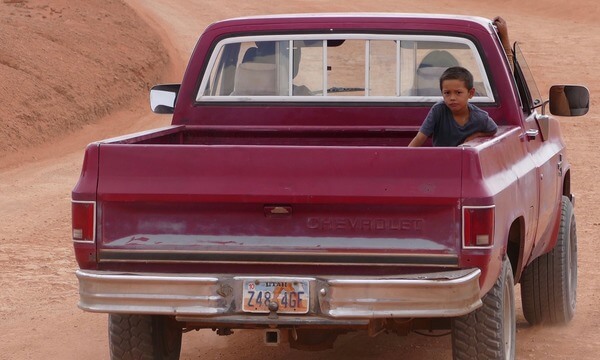News Release from windfair.net
Wind Industry Profile of
Once banished, now in high demand: Native Americans as partners of energy companies
Although nearly 8% of wind energy potential in the U.S. is on tribal lands, there have been few industrial-scale wind energy projects there, as these projects are often hampered by complex regulatory frameworks and issues related to stakeholder consultation and participation, tribal autonomy, and self-determination.
This makes a news story from this week all the more sensational: Avangrid, an energy company owned by Spain's Iberdrola Group, and the Navajo Tribal Utility Authority (NTUA), the largest utility owned and operated by a Native American tribe, announced the signing of a memorandum of understanding to explore opportunities to develop up to 1 gigawatt of green energy projects within the Navajo Nation in the states of New Mexico and Arizona.
At 67,339 square miles, the Navajo Nation is the largest Native American reservation in the United States, reaching e.g. the size of the state of Germany's Bavaria. The reservation is located in the sandstone desert in the border area of the states of Utah, Arizona and New Mexico south and west of the 'Four Corners' point and is part of the Colorado Plateau at an altitude of 1500 to 2000 m above sea level - thus offering ideal conditions for the construction of wind turbines and solar panels.
Both sides now want to work together to investigate the feasibility of developing wind and solar projects as well as battery storage solutions. The goal is to create new jobs and promote economic development for the Navajo Nation, providing affordable green energy to power businesses and residents.
Navajo Nation President Buu Nygren expresses confidence in the collaboration, "The Navajo Nation appreciates Navajo Tribal Utility Authority’s efforts in the clean energy generation space. As a wholly owned entity of the Navajo Nation, the utility’s tenacity and development of partnerships shows what can be accomplished."
The indigenous utility also sees benefits. NTUA General Manager Walter Haase says, "We do believe the partnership we have with AVANGRID will advance clean green energy development on the Navajo Nation and will help provide benefits to the communities served by NTUA. We look forward to the progress this partnership will bring."
This collaboration is supported by the Inflation Reduction Act (IRA), which the current U.S. administration passed last year. Since then, the agencies have continued to establish grant programs specifically for Native Americans. The IRA opens a path to meaningful emissions reductions for Native tribes through the development of projects that can help them transition to a cleaner energy economy.

Native American tribes hope to improve their lives by using renewable energy on their lands. (Image: Pixabay)
Thus last week, the U.S. Department of Energy's Office of Indian Energy released a $15 million funding announcement for the conversion of tribal colleges and universities (TCUs) to clean energy. In this way, the U.S. government also hopes to address the skills shortage facing the industry.
"Tribal Colleges and Universities play an integral role in cultivating Native American leaders with the experience, knowledge, and passion to pursue innovative pathways toward a sustainable future," says Wahleah Johns, Director of the Office of Indian Energy. "By investing in our Native youth and clean energy infrastructure across these institutions of higher education, we are helping lay a foundation for the next generation of leaders to shape the future of energy in Indian Country."
Back in February, the U.S. Department of Energy (DOE) announced $50 million in funding to support the deployment of clean energy technologies on tribal lands. U.S. Secretary of Energy Jennifer M. Granholm sees the investment as helping tribes help themselves: "Tribal nations are a key partner in the fight to combat the climate crisis and their visionary leadership is critical to the nation’s transition to an equitable clean energy future. This new investment will help Indigenous communities everywhere make informed decisions about their own energy needs and unlock stronger economies and increased access to reliable and affordable clean energy resources."
Between 2010 and 2022, the Department of Energy's Office of Indian Energy invested more than $120 million in more than 210 tribal energy projects across the U.S., whose successes can be tracked on the Department of Energy's Tribal Energy Projects Database homepage.
- Author:
- Katrin Radtke
- Email:
- press@windfair.net
- Keywords:
- USA, Native American, tribe, land, Avangrid, Navajo, indigene, wind, solar, battery, energy, green, partner






















